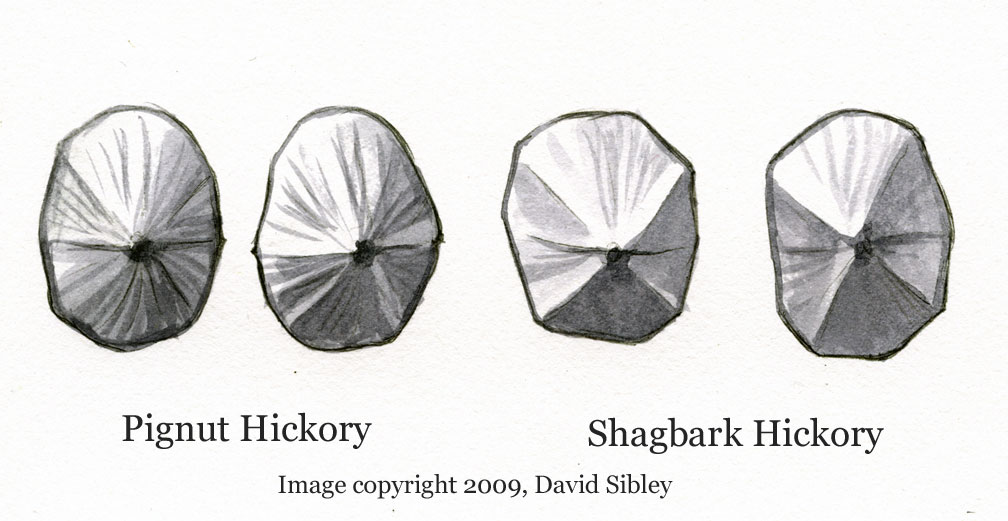Thanks to an email from Ray Telfair I’ve taken a closer look at the illustrations and descriptions of hickory nuts on pages 143 to 149 in the Guide to Trees. I used the terms “angled” and “ribbed” interchangeably, and illustrations such as Pignut Hickory p 145 appear “angled”, which is confusing and incorrect, so I’ll try to clarify and correct here.
In general, as shown in the image below, the three species in the Shagbark group (Shagbark, Shellbark, and Mockernut hickories) have the nuts 4-angled. This could also be called 4-sided and can be felt as you roll the nuts with your hand. The four species in the Pignut group (Pignut, Scrub, Black, and Sand hickories) generally have the nuts more smoothly curved, not clearly 4-angled. All of these species, in both groups, can and do have the nuts “ribbed”, but only the Shagbark group has “angled” sides. Trees in the Pecan group tend to have the nuts smooth and rounded (except rough and flattened in Water Hickory).

The difference in shape is variable and can be difficult to determine on some trees, and there are probably trees with the “wrong” shape, so don’t rely solely on this feature for identification. More study will help to understand the variation.


Can you offer a comment on your tree book for the readers of my blog on local biodiversity? Web site link attached in header, I think?
Thanks
Add this to the editorial corrections page?
It took me years to sort out the local hickories here in Virginia…and I am still working on it. Here is one problem I had to overcome when the nuts were telling me one thing and the trees were telling another. Finally, I noticed a squirrel nest high in the Bitternut. The squirrel was taking pignuts from a pignut tree and carrying them up the Bitternut to eat, dropping the pignut shells under the Bitternut!
have a very large hickory tree and the nuts are large (11/2) in, round and slightly flat, very dark like a black walnut, and very good to eat. I also have 5 other species of hickories on my farm. I am puzzled concerning the one described above and am unable to find it identified in any chart. If anyone knows exactly what species it is I would appreciate their input. Thanks